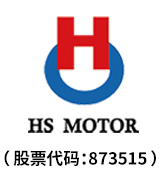Typically, motors are selected only according to horsepower or price. Therefore, the target of moving a load at minimal cost cannot be achieved.
In the simplest case, a motor is a thermal management problem designed to get the maximum amount of work without accumulating over its design limits. Here is a basic application of induction motors working at constant (line) speed—so far the most common industrial applications and avoiding major pitfalls, shortening their lives and increasing the cost of the application.
Step 1: Pay attention to the load characteristics, because torque cause heat
For linear operation of the motor, the load is divided into three types: constant torque, sudden torque change, and torque gradually changes with time.
Step 2: Obtain control of horsepower
The rule of thumb for motor horsepower is to select only what you need and avoid too big or too small.
Step 3: Prepare to Start
Another consideration is inertia, especially during the startup process. Each load represents a certain amount of inertia, but the punching presses, ball mills, crushers, gearboxes that drive big rolls, and some types of pumps require high starting torques because of the great quality of the rotating parts. These applications require a specific rating of the motor, so that the temperature rise at startup does not exceed the permissible temperature limit. The motor with the proper size must be able to load pull-up to operating speed (pull-up torque) from a dead station (locked-rotor torque), and then keep running speed.
Step 4: Adjust the duty cycle
Duty cycle is the load that must be handled when the motor is starting, running and stopping.
Step 5: The final consideration, motor hypoxia
If your want to operate the motor at altitudes above sea level, then it will not be able to operate in its full operating state, because at high altitude, the air density is low and not cold. Therefore, the motor must be reduced in the safety limit of temperature rise. Up to 3,300 ft, SF = 1.15; at 9000 ft, down to 1.00. This is an important consideration for the excavation of elevators, conveyors, fans, and other equipment operating at high altitudes.
 English
English

